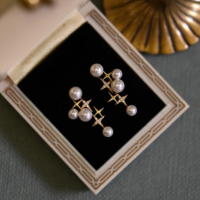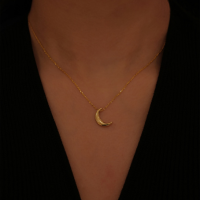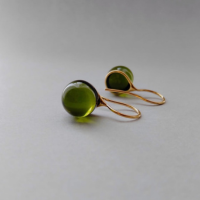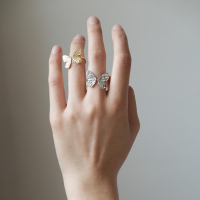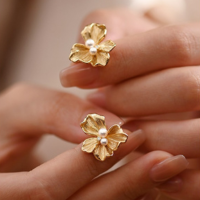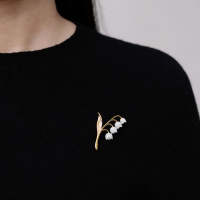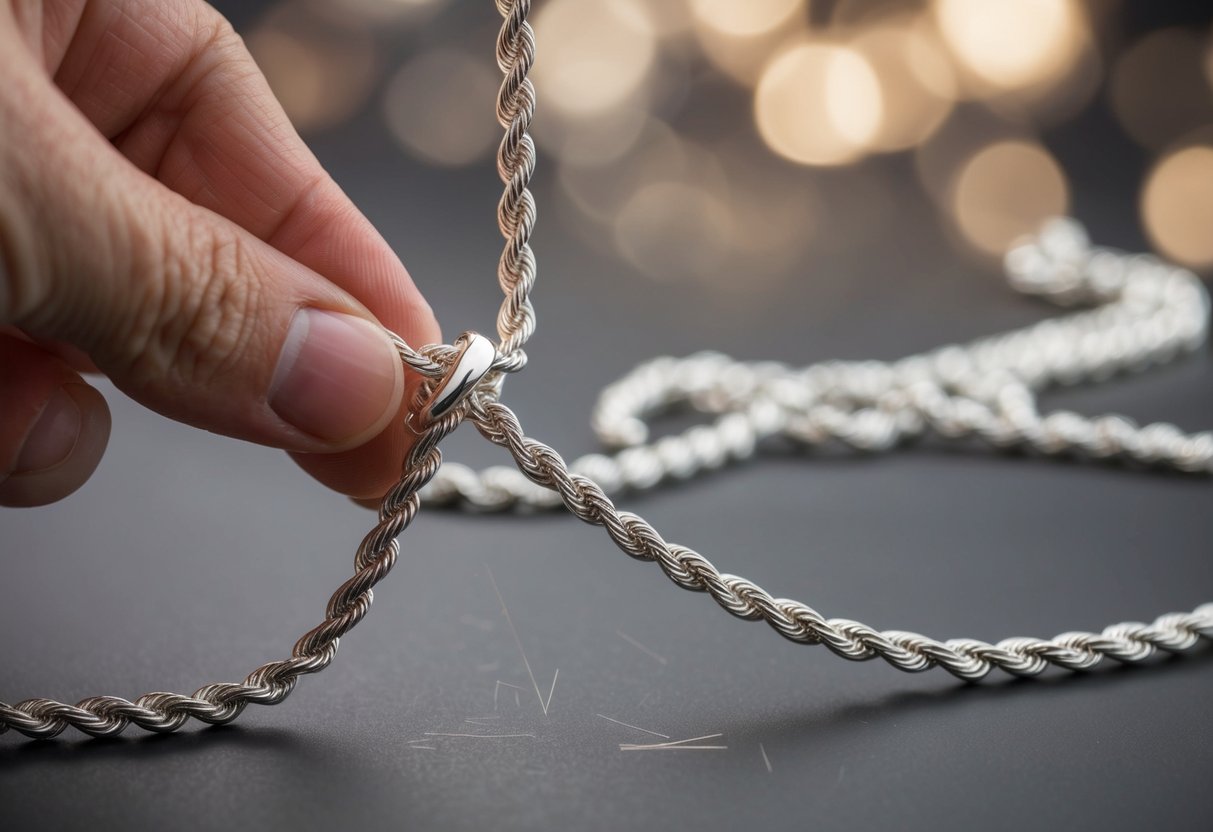
Does Jewelry Depreciate
Check out our personalized jewelry collections! (kids drawing jewelry, coin jewelry, wire jewelry, fingerprint jewelry, handwriting jewelry, and more)
Jewelry can capture our eye with its sparkle and shine. Whether it's a gold necklace or a diamond ring, the charm of jewelry is undeniable. But does jewelry lose its value over time? The truth is, most jewelry does depreciate, just like a car or a phone. Exceptions exist, such as antique or rare pieces, which might gain value instead.
We often buy jewelry for celebrations and as gifts, cherishing the memories they hold. Yet, when considering resale, we must understand that factors like craftsmanship, material, and market trends can influence value. This makes it essential to know which pieces are likely to retain or lose their worth over time.
At the end of the day, knowing how to maintain our jewelry can make a difference. From storing pieces properly to regular cleaning, small efforts can help preserve their beauty and value. Let's explore what affects the worth of our treasured jewelry and how we can make smart choices for the future.
Key Takeaways
- Jewelry usually depreciates over time.
- Rare or antique pieces might gain value.
- Proper care helps maintain value.
Basics of Jewelry Depreciation
Jewelry depreciation varies based on material and design. We’ll explore what depreciation means and which types of jewelry tend to lose value.
What Is Depreciation?
Depreciation is when an item loses value over time. For jewelry, this can happen due to wear, changing fashion trends, or lesser demand. When we buy jewelry, it may not hold its original price if we decide to sell it later.
Some pieces, like those made of gold or diamonds, may retain value better. The market for precious metals and stones often influences resale value. In contrast, costume jewelry often sees quicker depreciation. It’s important for us to understand these factors before making a purchase.
Types of Jewelry That May Depreciate
Not all jewelry depreciates equally. Gold and silver jewelry often holds its value better due to the intrinsic worth of metals. Similarly, diamond jewelry may maintain more value over time. These pieces have a constant market demand.
On the other hand, fashion and costume jewelry tends to depreciate faster. These items are often crafted from less valuable materials. Trends in fashion can also limit how long these pieces stay desirable. We often find that such jewelry may have less resale value.
Factors Influencing Jewelry Value
When we talk about jewelry value, we focus on key elements. These include the quality of materials used, the brand's prestige, and how a piece is designed and crafted. These factors play a big role in determining what a piece of jewelry is worth over time.
Material Quality
The type and purity of materials greatly affect jewelry value. Gold, silver, platinum, and gemstones are commonly used. The karat of gold or clarity of a diamond can mean a big difference in worth.
For example, pure gold is more valuable than gold alloy. Similarly, a high-clarity diamond is worth more than one with visible flaws. When shopping for jewelry, we should consider the quality and type of materials because they largely determine its future worth.
Brand Prestige
Brands can elevate the value of jewelry significantly. Jewelry from high-end brands like Cartier or Tiffany often retains or increases in value over time. This is because of the brand’s reputation for quality and exclusivity.
Collectors and enthusiasts seek prestige brands, willing to pay more for their distinct styles and reliable craftsmanship. Our understanding of a brand's recognition impacts how we view the jewelry’s value and potential appreciation.
Design and Craftsmanship
Unique design and exceptional craftsmanship can increase jewelry value. A piece with intricate details and well-crafted settings often appeals more to buyers. Custom-made pieces can also hold or increase in value due to their uniqueness.
Design trends can influence desirability. A classic or trendy piece gains attention, impacting its monetary and sentimental value. By focusing on details and creativity, we appreciate why design and craftsmanship matter in valuing jewelry.
Evaluating Jewelry Depreciation
Jewelry can either lose or maintain its value over time. Understanding how appraisals work and market trends impact the depreciation of jewelry is important.
Methods of Jewelry Appraisal
To determine the current value of jewelry, we have to consider how it's appraised. Appraisers evaluate pieces based on materials, craftsmanship, and brand reputation. Precious metals and high-quality gemstones maintain their value better.
Craftsmanship refers to the techniques used to make a piece. Fine jewelry typically retains more value than costume jewelry. Well-known brands often hold value due to their reputation. Appraisers also look at condition—scratches and missing stones can decrease the value significantly.
Understanding weight, cut, and origin, especially with diamonds, can be crucial in determining depreciation. Methods may vary, but these common factors ensure a thorough appraisal.
Market Trends
Market trends influence jewelry value. Precious metals, like gold and silver, see value changes based on supply and demand. We need to observe prices for these metals and adjust expectations accordingly.
Gemstones follow similar market influences. Popularity sways value; for example, emeralds in vogue might fetch higher prices. Economic conditions also play a key role. In strong economies, luxury items are often more desirable, while in downturns, demand might drop.
Keeping an eye on trends helps us make informed decisions about buying or selling. This approach ensures we are mindful of the current market dynamics affecting jewelry depreciation.
Maintaining Value Over Time
Jewelry can maintain its value if we care for it properly and keep records of its history. Taking the right steps ensures our precious pieces last for many years and even gain value.
Proper Jewelry Care
To keep our jewelry in top condition, regular cleaning is essential. Gentle cleaning with a soft cloth helps prevent tarnish. For more delicate pieces, we recommend professional cleaning.
Avoid exposing jewelry to harsh chemicals found in lotions, perfumes, and cleaning products. It's wise to put on our jewelry after applying these items to reduce damage.
Storage is also crucial. Each piece should be stored separately in a soft pouch to prevent scratches. For fine jewelry, a secure, climate-controlled location helps prevent tarnishing and degradation.
Proper handling during tasks like cooking or gardening can further protect our pieces. If we treat our jewelry with care, it stands a better chance of holding its value.
Documentation and Provenance
Keeping detailed documentation is vital to maintaining value. Important details include purchase receipts, appraisals, and certificates of authenticity. These documents verify the legitimacy and origin of our jewelry, which becomes crucial if we decide to sell.
The provenance, or history, of a piece can increase its value. Knowing the previous owners or any notable occasions it's been part of can add prestige. It's like a story that enriches the item.
As jewelry changes hands, maintaining this documentation ensures the piece retains its full value and helps establish its history for future buyers. Proper records can make a significant difference when it comes to valuation.
Understanding Resale Value
Jewelry can have different values when resold. Factors such as design, brand, and condition play important roles in determining these values. Knowing where to sell pre-owned jewelry is crucial for getting the best price.
Selling Points for Used Jewelry
The design and brand of a piece often affect its resale value. Popular labels or timeless styles tend to fetch higher prices. Buyers seek unique gemstones and high-quality materials, which increase appeal.
Condition is also key. Regular maintenance, like cleaning and polishing, can preserve the piece's appeal. Documentation, such as certificates of authenticity or appraisal reports, boosts buyer confidence. They offer proof of the jewelry's value and origin.
Finally, pieces with a story or unique history can captivate potential buyers. Think of engagement rings passed down through generations or jewelry once owned by celebrities. These factors together make your jewelry more appealing in the resale market.
Where to Sell Pre-Owned Jewelry
Selling pre-owned jewelry can be done through several channels: online marketplaces, local jewelers, or auction houses. Platforms like eBay or Etsy offer vast audiences and low selling fees. They allow us to connect with buyers worldwide and offer the chance to showcase items through detailed listings.
Local jewelers are another trusted option. They have expertise in assessing jewelry and often purchase pieces for resale. Some offer consignment options, where they sell our pieces for a commission.
Auction houses are ideal for high-value or rare items. They can attract serious collectors willing to bid competitively. It's wise to consult with auction specialists and local jewelers to decide the best selling route for our jewelry based on its unique characteristics.
The Role of Vintage and Antique Jewelry
Vintage and antique jewelry offers a charm that modern pieces sometimes can't match. These pieces often hold historical value and unique designs that set them apart from contemporary styles.
Recognizing Timeless Pieces
Vintage and antique jewelry often sparks interest because of its craftsmanship and history. Collectors and enthusiasts appreciate these pieces not only for their age but also for the stories they might tell. Antique jewelry is typically at least 100 years old, while vintage pieces are usually over 20 years old. Each has distinct characteristics influenced by the era they come from.
Key characteristics include:
- Design and Material: Older pieces often display unique design features and use materials that may not be commonly used today.
- Craftsmanship: The detailed work in many vintage and antique items showcases high levels of skill and attention to detail.
These factors make vintage and antique jewelry special, often maintaining or even increasing value over time.
Frequently Asked Questions
Jewelry may lose value over time, but some pieces hold their worth better than others. The value can change based on materials, market trends, and craftsmanship.
What factors affect the resale value of gold jewelry over time?
The resale value of gold jewelry depends on gold purity, weight, and current market price. Designs and brand reputation might also influence pricing. Vintage and antique pieces may fetch more if they are in demand.
How is the depreciation rate of jewelry calculated?
Depreciation is generally calculated by comparing the difference between the purchase price and the resale price. This can be influenced by wear and tear, fashion trends, and metal market values.
Can the value of diamond jewelry increase after purchase?
The value of diamond jewelry may increase, especially if it features a rare cut, size, or quality. Changes in diamond market demand can also affect prices. Quality certifications from recognized authorities help retain value.
What impacts the appreciation or depreciation of fine jewelry pieces?
Fine jewelry may depreciate if styles change or materials lose favor. Factors like brand prestige, craftsmanship, and historical importance can support value appreciation. Inflation and scarcity of materials also play significant roles.
How much value does jewelry retain compared to its original retail price?
Jewelry value retention varies. Some pieces might retain 20% to 50% of their purchase price, while branded or rare items might hold more. Resale often yields less due to retailer markups at the time of original purchase.
Do certain types of jewelry retain their value better than others?
Yes, branded jewelry, limited editions, and unique designs often hold their value better. Pieces made with high-quality materials like platinum, and those with gemstones like diamonds or sapphires, may also retain worth better over time.

